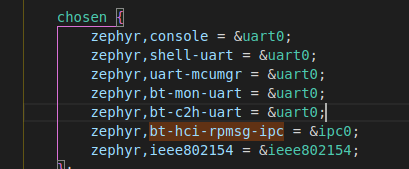Hello. I am just getting started with nRF5340 development using the u-Blox NORA-B106 dev kit. I am trying to use the peripheral_uart code example to understand how the two processors use the shared memory space to communicate. I am able to send data over Bluetooth and have it appear in a terminal connected to the J-link UART, so the app is working. But tracing through the code, I'm unable to find where the received data is being put in shared memory so the UART function call can see it.
1) Can someone point me to the specific code within this example where this happens?
2) In general, how do you assign a variable to reside in this space so that both processors can access it? I'm assuming this is done through linker files for both net and app builds so that the same variable is mapped to the same memory location, but I can't find those files either.
Coming from STM32 and FreeRTOS, so the Zephyr learning curve is feeling steep so far. Any help is appreciated.
Thanks,
Jamie



